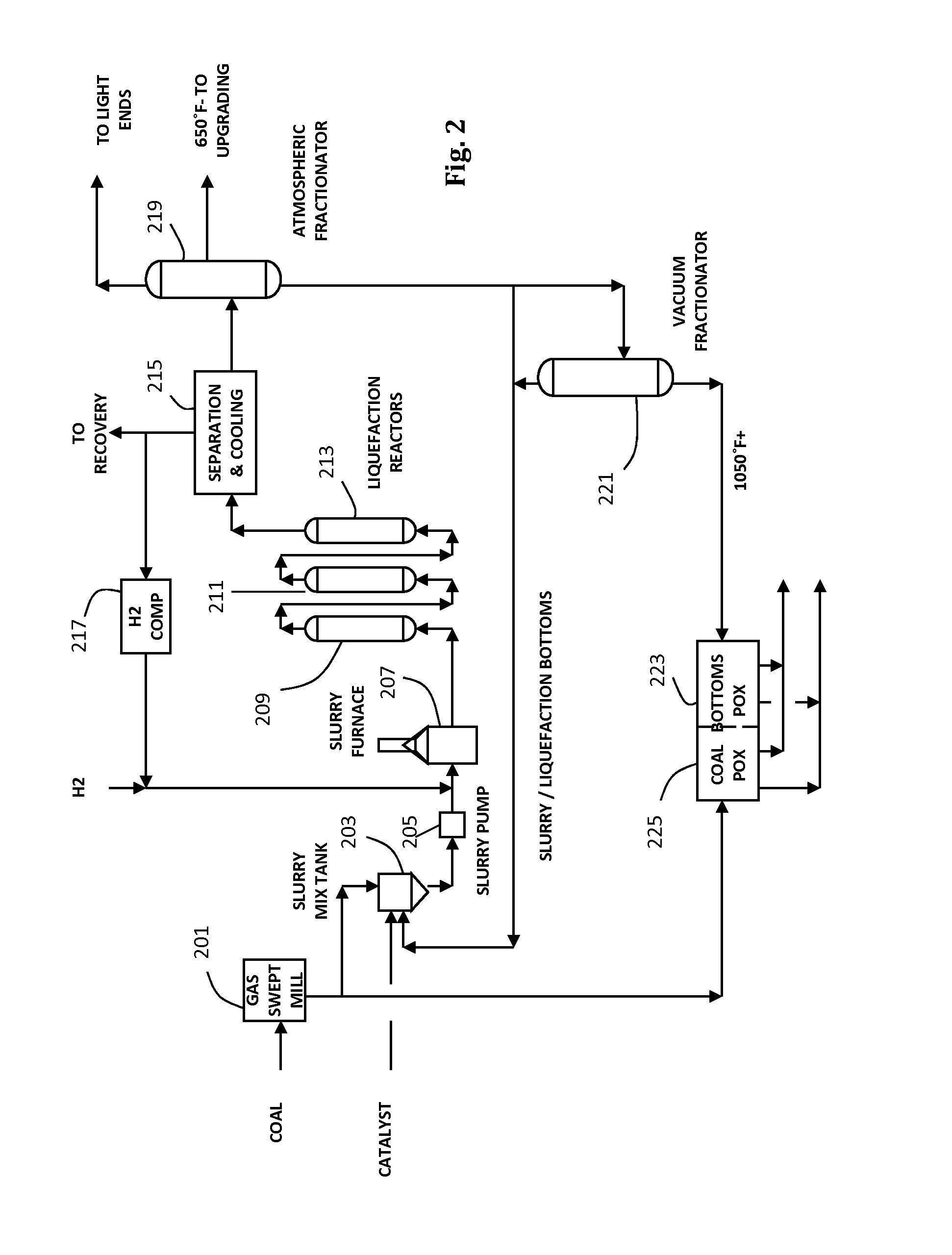Integrated coal to liquids process and system
a technology of liquid process and coal, applied in the field of integrated coal to liquid process and system, can solve the problems of low thermal low efficiency of indirect coal-to-liquid conversion method, waste of carbon resources, etc., and achieve the effect of minimizing carbon dioxide emissions and efficiently using carbon resources
- Summary
- Abstract
- Description
- Claims
- Application Information
AI Technical Summary
Benefits of technology
Problems solved by technology
Method used
Image
Examples
Embodiment Construction
[0013]Various direct coal liquefaction (DCL) processes and systems have been developed, for instance those disclosed in U.S. Pat. Nos. 4,077,867, 4,485,008, 4,637,870, 5,200,063, 5,338,441, and 5,389,230, the disclosures of which are hereby incorporated by reference in their entirety. DCL processes have the advantage of being capable of substantially higher thermal efficiencies, on the order of 60-65%, than indirect processes such as FT synthesis and MTL conversion processes which are capable of thermal efficiencies of only about 45-52%. FT and DCL processes by themselves are capable of an efficiency of converting the carbon in the coal to useful products of at most about 50%. In accordance with ICTL process and system of the invention, the conversion of coal is performed primarily by DCL, with an adequate amount of coal and biomass (preferably including algae or algae hydroprocessing residue) being gasified, and optionally natural gas being converted, to produce syngas for providin...
PUM
| Property | Measurement | Unit |
|---|---|---|
| temperature | aaaaa | aaaaa |
| pressure | aaaaa | aaaaa |
| length | aaaaa | aaaaa |
Abstract
Description
Claims
Application Information
 Login to View More
Login to View More - R&D
- Intellectual Property
- Life Sciences
- Materials
- Tech Scout
- Unparalleled Data Quality
- Higher Quality Content
- 60% Fewer Hallucinations
Browse by: Latest US Patents, China's latest patents, Technical Efficacy Thesaurus, Application Domain, Technology Topic, Popular Technical Reports.
© 2025 PatSnap. All rights reserved.Legal|Privacy policy|Modern Slavery Act Transparency Statement|Sitemap|About US| Contact US: help@patsnap.com


